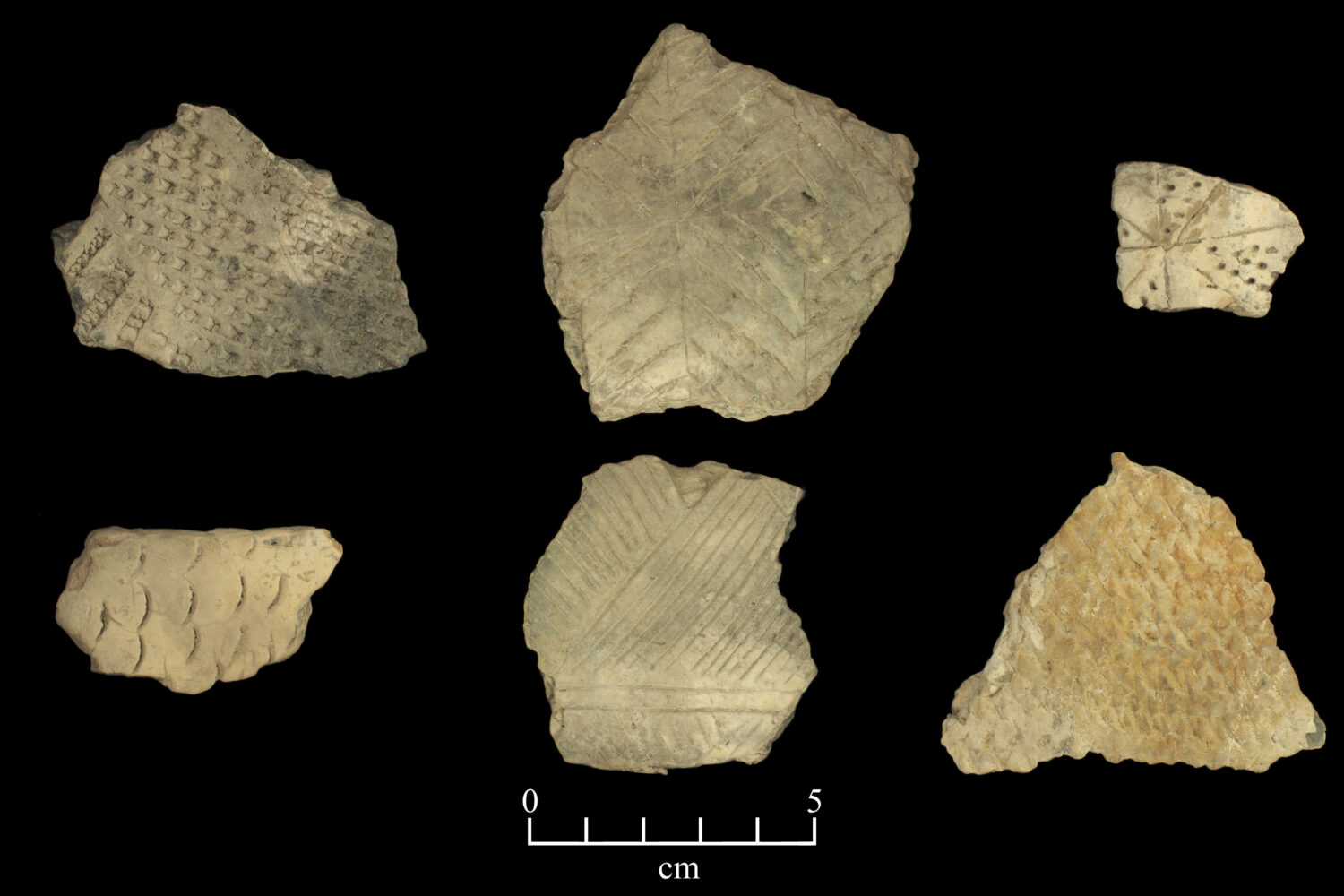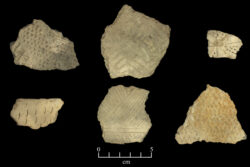Woodland Period
People of the Tchefuncte, Marksville, Troyville, and Coles Creek cultures lived in Louisiana during the Woodland period.
This entry is 4th Grade level View Full Entry

R. Christopher Goodwin & Associates, Inc. and FEMA
Examples of Tchefuncte pottery recovered from the Bayou Jasmine Site in St. John the Baptist Parish, Louisiana.
What was the Woodland period like?
The Woodland period is the third period historians and archaeologists use to describe prehistoric cultures in the United States and Louisiana. It lasted about 2,000 years, from 800 BCE to 1200 CE. During this time people became increasingly sedentary, meaning they lived year-round in one place rather than moving around. This new lifestyle allowed groups to create new tools—like pottery—and new foods as native plants became domesticated. Living in one place and having new tools and foods helped increase the population. Archaeologists find a lot more Woodland culture sites than sites from the Paleoindian and Archaic periods.
Toward the end of the Woodland period, hunting techniques (and possibly warfare) changed in a really big way as the atlatl and spear were replaced by the bow and arrow. Projectile points, now actual arrowheads, were smaller and more aerodynamic.
People of the Woodland culture began building dome-shaped burial mounds around 100 BCE. Later, around 500 CE, they built flat-topped mounds. These flat-topped mounds were likely first used as stages for public rituals, but they eventually became bases for buildings like temples and houses for members of the elite class. These mounds were built around level plazas where ceremonies took place.
What cultures lived in Louisiana during the Woodland period?
The Tchefuncte culture (800 BCE–1 CE) is the name archaeologists call a group of people who lived in the Lower Mississippi River Valley and along the northern Gulf of Mexico near the beginning of the Woodland period. Tchefuncte people were fishers, hunters, and gatherers. They didn’t build massive earthworks and extensive trade networks like the people of Poverty Point did, but Tchefuncte people took to making clay pots with gusto. Tchefuncte pottery designs indicate that they communicated with groups living across Louisiana and the southeastern United States.
After the Tchefuncte culture, the Marksville culture emerged (1 CE–400 CE). This culture was named after the town of Marksville in Avoyelles Parish, the site of a famous archaeological site—also called Marksville. The Marksville site has six earthen mounds surrounded by a large C-shaped ridge. Marksville people created much stronger pottery than the Tchefuncte did, and they decorated their pots with complex geometric designs that were lightly carved onto the surface; sometimes the designs were images of different birds.
The Troyville culture (400–700 CE), another important but poorly understood group, is named after the Troyville archaeological site in a town called Jonesville in Catahoula Parish. Archaeologists found some important artifacts at this site, including pottery that connected the site with the Marksville culture, new types of painted pottery, and lightweight arrow points. The number of arrowheads recovered shows that the bow and atlatl were becoming widely used.
People that archaeologists call the Coles Creek culture (700–1200 CE) produced some of the finest arrowheads and pottery from the Woodland period. At its height, the Coles Creek culture covered most of modern-day Louisiana and had lots of contact with other cultures along the northern Gulf Coast. In the late Woodland period, Coles Creek people living in northeast Louisiana traded with people as far north as modern-day St. Louis, Missouri.
Cole Creek sites are easy to recognize. They have flat-topped mounds placed at each of the cardinal directions (north, south, east, and west). In the center of these mounds was a plaza, used for rituals and games. One example of this layout is the Balmoral site in Tensas Parish, which US Route 65 passes through. Anyone driving on the highway a few miles north of Newellton will pass directly through the ancient plaza. Because their sites are so impressive, archaeologists once believed that Coles Creek people relied on corn and other foods produced through agriculture, but new evidence shows that these mound builders supported themselves by fishing, hunting, and gathering wild foods, just like their ancestors.
